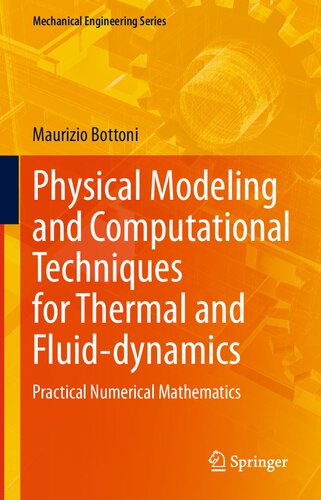

Most ebook files are in PDF format, so you can easily read them using various software such as Foxit Reader or directly on the Google Chrome browser.
Some ebook files are released by publishers in other formats such as .awz, .mobi, .epub, .fb2, etc. You may need to install specific software to read these formats on mobile/PC, such as Calibre.
Please read the tutorial at this link: https://ebookbell.com/faq
We offer FREE conversion to the popular formats you request; however, this may take some time. Therefore, right after payment, please email us, and we will try to provide the service as quickly as possible.
For some exceptional file formats or broken links (if any), please refrain from opening any disputes. Instead, email us first, and we will try to assist within a maximum of 6 hours.
EbookBell Team

4.7
106 reviewsThis book on computational techniques for thermal and fluid-dynamic problems arose from seminars given by the author at the Institute of Nuclear Energy Technology of Tsinghua University in Beijing, China. The book is composed of eight chapters-- some of which are characterized by a scholastic approach, others are devoted to numerical solution of ordinary differential equations of first order, and of partial differential equations of first and second order, respectively. In Chapter IV, basic concepts of consistency, stability and convergence of discretization algorithms are covered in some detail. Other parts of the book follow a less conventional approach, mainly informed by the author’s experience in teaching and development of computer programs. Among these is Chapter III, where the residual method of Orthogonal Collocations is presented in several variants, ranging from the classical Galerkin method to Point and Domain Collocations, applied to numerical solution of partial differential equations of first order. In most cases solutions of fluid dynamic problems are led through the discretization process, to the numerical solutions of large linear systems. Intended to impart a basic understanding of numerical techniques that would enable readers to deal with problems of Computational Fluid Dynamics at research level, the book is ideal as a reference for graduate students, researchers, and practitioners.